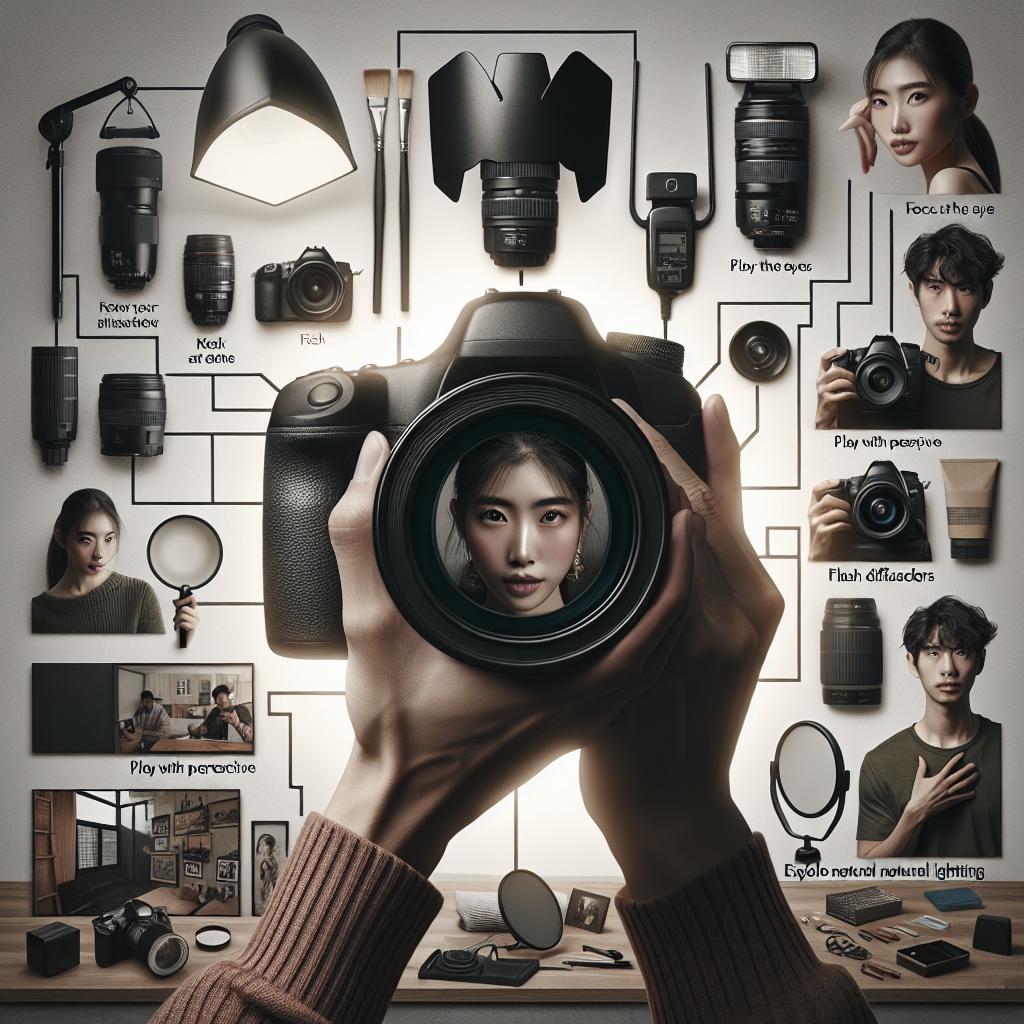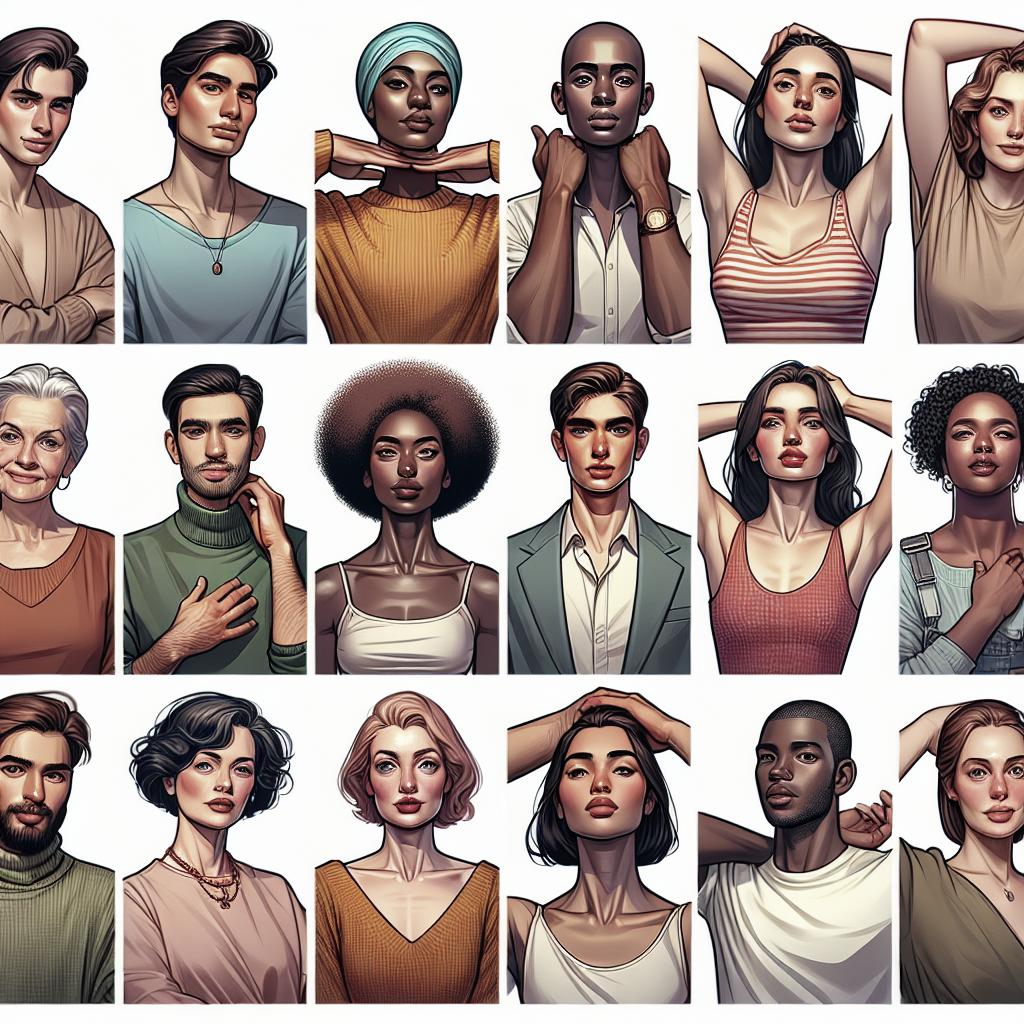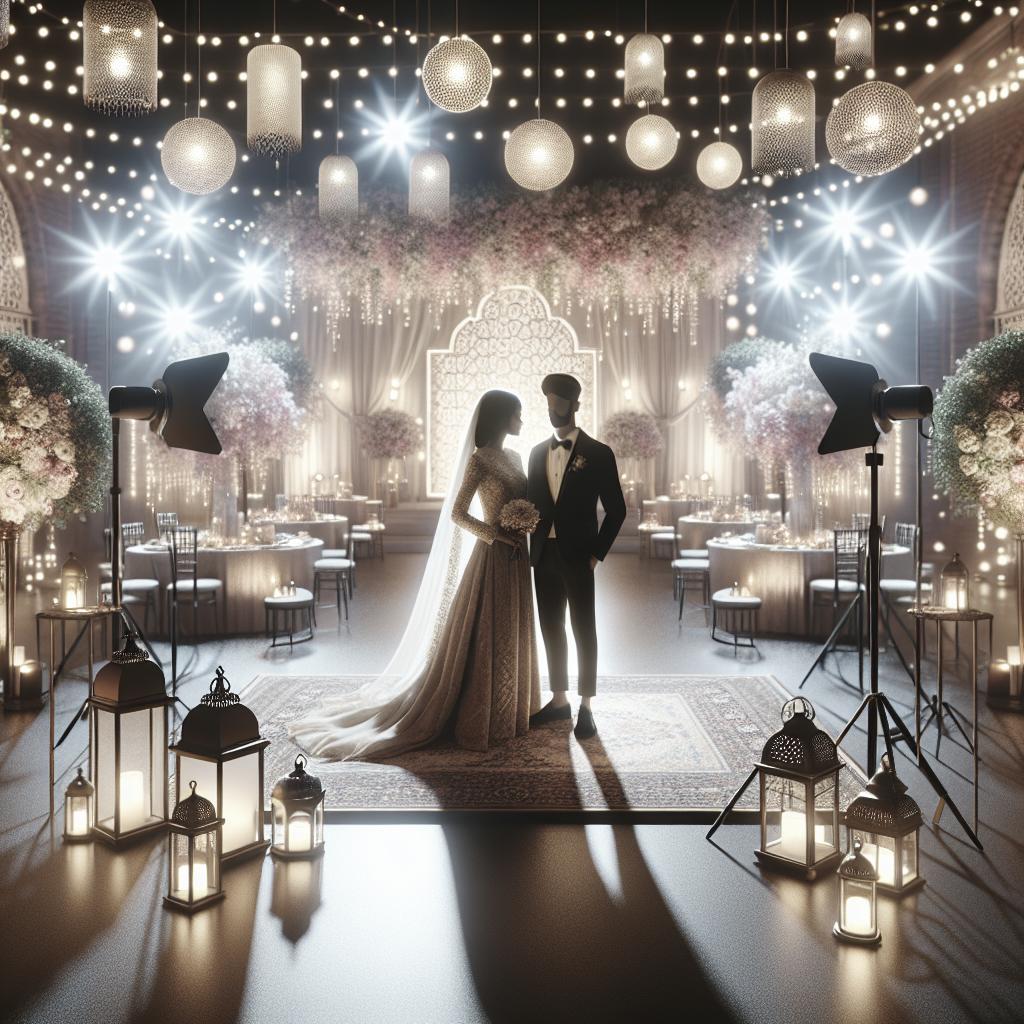<>
“`
Portrait photography is an art form that captures the essence and personality of individuals. Whether you’re a beginner or looking to refine your skills, mastering portrait photography requires attention to detail, technical knowledge, and a creative eye. This comprehensive guide covers essential tips, from choosing the right background and lens to effective communication and innovative editing techniques. Read on to learn how to capture compelling portraits that stand out and truly represent your subject.
1. Background matters
The background of your portrait can either enhance or detract from the subject. A cluttered or distracting background can draw attention away from the person you’re photographing. Instead, opt for simple backgrounds that complement the subject without overwhelming them. Nature settings, plain walls, or textured backgrounds often work well.
Consider using a shallow depth of field to blur the background, making your subject the focal point. This technique is achieved by using a wide aperture (a low f-stop number), which creates a pleasant bokeh effect. Experiment with various backgrounds and aperture settings to see what best suits your style and the story you want to tell through your portrait.
2. What are the eyes doing?
The eyes are the window to the soul, and in portrait photography, they are critical. Ensure the eyes are in sharp focus, as they often become the focal point of the image. You can add more life to the eyes by shooting in natural light or using a catch light, which is a small reflection created by studio lights or a reflector.
Direct your subject to look in different directions; straight into the camera is not always the best choice. Have them look to one side, down, or up. Experimenting with eye direction can create a more dynamic and interesting portrait that tells a unique story.
3. Candid approach
Candid portraits capture genuine emotions and moments, providing a more authentic representation of your subject. To achieve this, give your subject something to do, rather than having them pose. This can be particularly effective for photographing children or in social settings, where people tend to act more naturally.
Using a longer lens allows you to take photos from a distance, making the subject less aware of the camera and more relaxed. It also helps in blurring the background, emphasizing the subject more. Candid shots can be some of the most rewarding in portrait photography for their ability to capture real, unscripted emotions.
4. Camera settings for portraits
Getting the right camera settings is crucial for beautiful portraits. Use Aperture Priority mode to control the depth of field and achieve a blurred background. Aim for an aperture between f/1.4 and f/2.8 for a shallow depth of field, which creates a soft, dreamy effect and brings attention to the subject.
Keep your ISO as low as possible to avoid grainy images, but adjust it upwards in low-light conditions. A shutter speed faster than 1/125th of a second is ideal for avoiding motion blur. Experiment with these settings to see what combination works best for your style and shooting conditions.
5. Break the norm
While there are many rules in portrait photography, don’t be afraid to break them to achieve unique results. Try unconventional angles, such as shooting from above, below, or even behind your subject. This can give a fresh perspective and add a creative element to your portraits.
Play with lighting techniques and compositions that break the traditional rules. For instance, instead of centering your subject, experiment with the rule of thirds or place them at the edges of the frame. Pushing boundaries can lead to distinctive and memorable portraits.
6. Lens choice
The lens you choose can significantly impact the quality and style of your portraits. Prime lenses with wide apertures, such as 50mm or 85mm, are popular for their sharpness and ability to produce beautiful background blur. These lenses also force you to move around, helping you find the best angles and compositions.
Telephoto lenses (such as 70-200mm) are great for candid shots, as they allow you to keep a distance from your subject while still capturing intimate moments. On the other hand, avoid wide-angle lenses for close-up portraits as they can distort the subject’s features.
7. Flashgun recycle time
When using an external flash, the term ‘recycle time’ refers to how quickly the flash can be ready for the next shot after firing. A shorter recycle time is preferable, especially in fast-paced environments or when taking multiple shots in quick succession.
Invest in a good flash unit with a fast recycle time, or use a battery pack that provides additional power to speed up the process. This ensures that you don’t miss important moments and helps maintain a steady workflow.
8. Natural light
Natural light often produces the most flattering portraits. The golden hours—shortly after sunrise and before sunset—provide soft, warm light that is perfect for portraits. Overcast days also offer diffused light that eliminates harsh shadows.
When shooting indoors, position your subject near a window to utilize soft, natural light. If the light is too harsh, use a sheer curtain to diffuse it. Reflectors can also help bounce light onto your subject, brightening their face and adding catch lights to their eyes.
9. Editing tips
Post-processing can enhance your portraits, bringing out colors and details that might not be obvious straight out of the camera. Software like Adobe Lightroom and Photoshop offer tools to adjust exposure, contrast, and color balance. Use these tools to subtly enhance rather than completely alter your image.
Pay special attention to retouching skin, but avoid over-editing which can result in an unnatural appearance. Aim to retain the natural textures of the skin while removing blemishes and imperfections. Add slight vignetting to bring focus to your subject and consider converting the image to black and white for a timeless look.
10. Communication, collaboration, and posing
Effective communication with your subject is paramount. Make them feel comfortable and at ease before and during the shoot. Discuss their preferences and ideas, and be open to collaboration, as this can lead to more authentic and engaging portraits.
Guide your subject with clear and friendly instructions on posing. Demonstrate poses yourself, and use props or furniture to help them pose naturally. Remember, a relaxed subject leads to a more compelling portrait.
11. Photographing children
Photographing children can be challenging but also very rewarding. Keep sessions short and fun to hold their attention. Allow them to play or interact with their surroundings, capturing candid and genuine expressions.
Get down to their eye level to create a more intimate and engaging portrait. Use a fast shutter speed to freeze movement and be ready to shoot continuously to capture those fleeting moments of joy and curiosity.
12. Wrinkles and crinkles
Unlike glossy magazines that often retouch every line and wrinkle, many prefer to capture true character in their portraits. Embrace wrinkles and crinkles, as they tell a story and add depth to your subject’s appearance.
Use soft natural light to emphasize these features gently. Low contrast settings can help in maintaining the integrity of your subject’s skin texture without making the wrinkles too harsh. Remember, every line has a story, and highlighting them can add authenticity to your portraits.
13. Location portraits
Choosing the right location can make a significant difference in your portraits. Urban settings, nature parks, or historical sites can add interesting backdrops that complement your subject. Ensure the location aligns with the story or theme you intend to portray.
Avoid crowded places unless you are aiming for that specific aesthetic. A clutter-free background helps in maintaining focus on your subject. Scout the location beforehand to identify the best spots and lighting conditions for your shoot.
14. DIY kit
Creating your own photography kit doesn’t have to break the bank. Simple items like a reflector, a DIY diffuser using a white sheet, or a homemade backdrop can significantly enhance your portraits. Creativity and resourcefulness go a long way in achieving professional results without expensive gear.
Keep an eye out for household items that can be repurposed: a white cardboard for fill light, a simple curtain rod setup for backdrops, or even smartphone apps for lighting and editing. DIY solutions allow you to adapt and innovate on the go.
Portrait photography video tutorials
Learning doesn’t stop with reading. Video tutorials from professional photographers provide practical insights and demonstrations. Platforms like YouTube, Skillshare, and MasterClass offer a wealth of content covering different techniques, styles, and tips for portrait photography.
Watching professionals in action can spark new ideas and offer solutions to challenges you may face. Bookmark tutorials from photographers you admire and revisit them periodically to consolidate your learning and draw inspiration.
Get the Digital Camera World Newsletter
Stay updated with the latest trends, tips, and reviews by subscribing to the Digital Camera World newsletter. It offers valuable insights from experts, keeps you updated on new gear releases, and provides inspiration for your photography journey.
Being part of a photography community helps you stay motivated, learn new techniques, and keep up with the evolving world of photography. Don’t miss out on opportunities to improve your skills and connect with like-minded photographers.
| Tip | Key Points |
|---|---|
| Background matters | Choose simple, non-distracting backgrounds; use shallow depth of field for blur |
| What are the eyes doing? | Focus on the eyes; experiment with different directions for eye gaze |
| Candid approach | Capture genuine emotions by giving subjects activities; use longer lenses |
| Camera settings for portraits | Use Aperture Priority mode; keep ISO low; use fast shutter speed |
| Break the norm | Try unconventional angles; experiment with lighting and composition |
| Lens choice | Prime lenses like 50mm or 85mm for sharpness; avoid wide-angle for close-ups |
| Flashgun recycle time | Invest in a flash with fast recycle time; use battery packs if needed |
| Natural light | Utilize golden hours; shoot near windows indoors; use reflectors |
| Editing tips | Subtly enhance with software; focus on realistic retouching |
| Communication, collaboration, and posing | Make subjects comfortable; guide poses; be open to ideas |
| Photographing children | Keep sessions short and fun; shoot at their eye level; use fast shutter speeds |
| Wrinkles and crinkles | Embrace natural features; use soft light and low contrast settings |
| Location portraits | Choose locations that complement the subject; scout for best spots |
| DIY kit | Use household items creatively; make your own reflectors and diffusers |
| Portrait photography video tutorials | Watch and learn from professionals; use platforms like YouTube and Skillshare |
| Get the Digital Camera World Newsletter | Stay updated with trends, tips, and gear reviews; join a photography community |
“`


